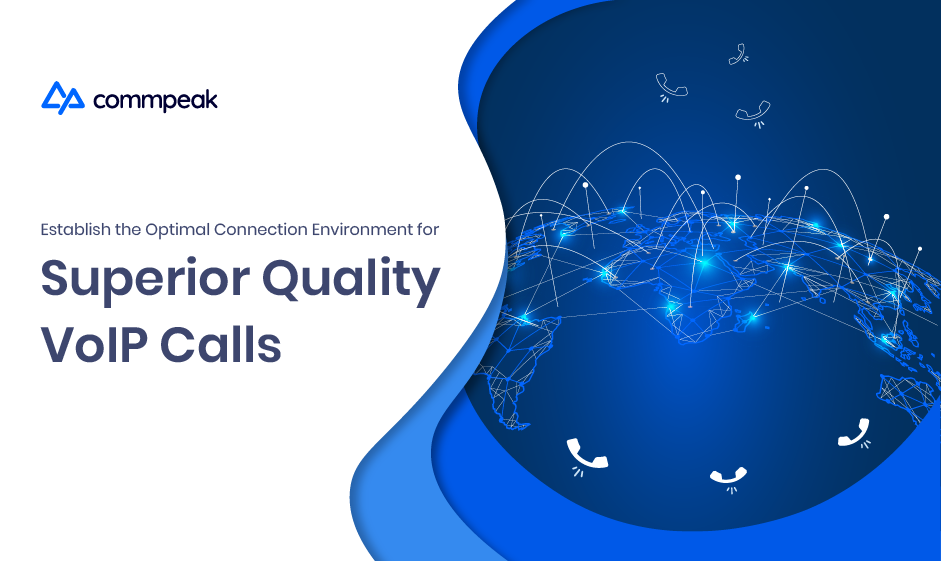In the upcoming decade, customer support proficiency will become more critical than ever for business success. Recent research explains that consumers are willing to pay more for a positive, rapid experience. Conversely, these same customers will quickly switch their patronage to another company after a single, lousy conversation.
As the focal point for corporate communications, contact centers carry the mounting responsibility of ensuring client satisfaction. Delays, echoes, outages, or other forms of call connectivity interruptions frustrate and alienate otherwise loyal customers, potentially costing your business hundreds of thousands of dollars.
Recognizing the vital importance of a positive interactional experience, leading call centers have enlisted technical experts to develop mechanisms of bypassing these would-be disastrous VoIP connection issues. Network redundancy, the process of adding and configuring alternative and backup connections, protects your call quality, minimizing downtime and disturbances.
By implementing redundancies within your network, you too can safeguard your customers’ experiences, securing your business’s future success.
Making Your Network More VoIP-Friendly
1. Multiple Internet Network Connectivity Equipment
Adopting an enterprise-grade router is the most standard call center practice of bolstering VoIP quality. These routers establish multi-WAN connections that can equip contact centers of all sizes with the ability to receive internet from multiple Internet Service Providers (ISPs). Typically configuring two connections, call centers will dedicate one network for regular data traffic and the other strictly for VoIP.
With a multi-Wan router, should one internet connection die for any reason, the other will take effect automatically, allowing agents to resume communications almost seamlessly. This type of failover redundancy creates uptime assurance for your VoIP operations, keeping communication channels open and ready for customer assistance.
2. Quality of Service (QoS)
Another means of ensuring optimal quality, even during precarious situations, is utilizing QoS technologies. Using this feature in your router authorizes you to configure your network to prioritize different types of data packets. QoS can ensure that SIP, or VoIP, packets will always receive preferential order, keeping VoIP-based conversations intact no matter how busy the connection is.
Imagine your contact center server has a total of 10MB of bandwidth that is currently being used at maximum capacity. Nevertheless, if VoIP packets appear, QoS ensures that they take precedence over other types of traffic to prevent jitters and other audio issues. Although the configuration might buffer videos or slow down downloads and other internet operations, your customers will have the clear-quality calls they deserve.
3. Traffic Shaping
Withholding a specific amount of bandwidth within your network solely for SIP data is another common practice for call centers focused on delivering excellent customer service and maintaining optimal voice quality. This method of creating a better environment for VoIP calls is particularly beneficial when connection capabilities are limited. Unlike QoS, traffic shaping reserves a portion of your network’s bandwidth regardless of other types of packets being sent and received.
For instance, if your contact center has 100MB of bandwidth, traffic shaping can ensure 15MB are available exclusively for SIP protocol packets. Even when conducting a network speed test, results will never be more than 85MB. This method of connectivity protection guarantees that your router limits data usage, always keeping 15MB free for VoIP, even if there is no current VoIP activity.
Best Practices
To design the optimal environment for SIP packets, your contact center should install a multi-WAN router, creating at least two different network connections. Simultaneously, you should also adopt either QoS or traffic shaping capabilities.
For VoIP, the safer option is to select an enterprise-grade router that supports traffic shaping. Your multiple networks will each be configured to reserve bandwidth specifically for both SIP packets and regular data. On top of that, your contact center will also have a failover solution should an interruption compromise the primary connection. Ultimately, the more safeguards you have in place, the more stable your call quality will be.
Exceptional Customer Service With CommPeak
Properly configuring failover redundancies and reserving bandwidth specifically for VoIP data mitigates the risk of connectivity interruptions. By safeguarding your contact center’s call quality, customers will receive quicker, more efficient service. The same customers will appreciate your dedication to delivering a positive experience and will, in the long run, invest more in your company.
Across the global marketplace, consumer satisfaction is becoming increasingly pivotal for future success. Consequently, your business would do well to do everything in its power to protect communication quality and ensure a positive, fruitful experience for your customers.
To discover a superior VoIP Service that enables you to communicate globally with your customers, contact CommPeak today.

